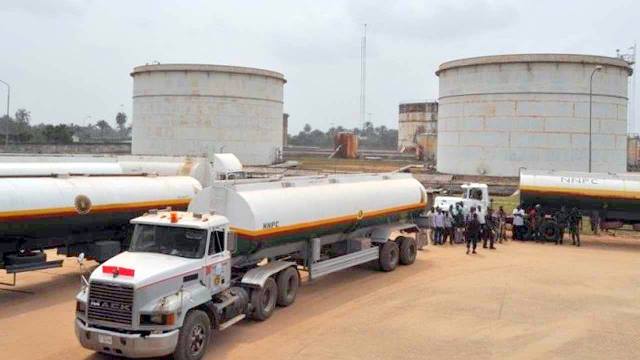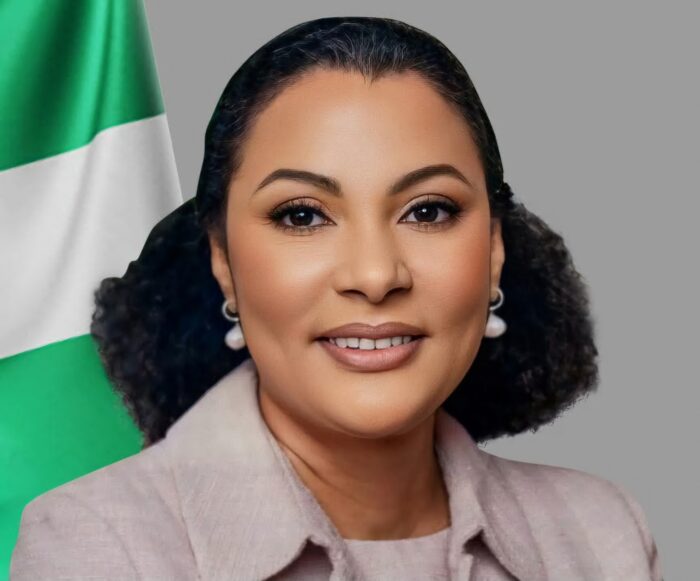
‘Another scam behind fuel subsidy’
The grand corruption associated with the fuel subsidy is that the federal government pays cash (N3.35 Trillion for Jan-Jun 2023) for fuel subsidy and at the same time uses crude oil swap to subsidise fuel. This is the double whammy.
The crude oil swap arrangement is through the Direct Sales Direct Purchase (DSDP) contract between the Nigerian National Petroleum Corporation (NNPCL) and oil marketers which started in 2017.
You will wonder why the NNPCL uses crude oil to swap for imported petrol PMS (and kerosene DPK) and subsidise the price of petrol but still has to spend such huge amount of money in Trillions of Naira to pay for subsidy.
The NNPCL being the sole importer of petrol, subcontracts the importation of petrol to third party oil marketers. Under this arrangement called the DSDP, the NNPCL allocates a particular volume of crude oil to oil marketers in what is supposedly a direct exchange for petrol and kerosene. For example, if the NNPCL allocates 1 million barrels of crude oil to the marketers, they (marketers) are required to supply to the NNPCL, equivalent litres of petrol and/or kerosene. The volume of crude oil supplied belongs to the NNPCL and is subsidised because the difference between the landing cost and the regulated price of N200 per litre is deducted from the volume of petrol or kerosene to be supplied by the marketer.
This means that fuei subsidy is captured in the DSDP contract so there is still fuel subsidy in Nigeria hence it is unjustifiable and unethical for the marketers to increase the pump price of petrol based on a so-called ‘pricing template’ released by the NNPCL.
Some Questions Arose from the Removal of Fuel Subsidy:
- The petrol being sold at filling stations since the removal of subsidy on 29th May 2023 is
of the old stock so why should the marketers currently apply prices ranging from N488 to N557 per litres to old stock which is already captured at N200 per litre?
2 The medium term expenditure framework (MTEF) budget Jan – Jun 2023 passed by the National Assembly includes fuel subsidy up to 30th June 2023 so why should the pump price be increased from 29th May 2023, a month before the expiration of fuel subsidy? - What happens to the subsidy included in the budget from Jan – Jun 2023?
Clearly, Fuel subsidy is built into the DSDP contract so technically, the federal government still pays for fuel subsidy albeit the pump price of petrol has jumped to N557 per litres over and above the regulated subsidised price of N200 per litre.
Fuel Subsidy is built into the DSDP contract between the NNPCL and marketers because when the NNPCL allocates crude oil to the marketers and they (marketers) import petrol in exchange, the following transpires:
- The marketers establish their landing cost. For example N510 per litre.
- The marketers will sell at N200 per litre so they deduct equivalent litres of petrol for N310 per litre (The difference between the landing cost N510 and the regulated price N200) from the volume of petrol they supply to the NNPCL.
- The marketers will also claim bridging (transport) cost from the federal government through the Nigerian midstream downstream petroleum regulatory authority (NMDPRA) which runs into several billions of Naira. Bridging is paid to the marketers per kilometre to augment the cost of transporting petrol from Lagos to for e.g Maiduguri, Enugu, Kano, Akure or Lokoja. The longer the distance, the higher the bridging claim.
Bridging is paid so that marketers will stick to the then regulated price of N200 per litre and should not increase prices but they (marketers) still increase pump prices of petrol after collecting bridging claims. Another double whammy! - The marketers also put up claims for demurrage
- The marketers often times put up claims for foreign exchange (FOREX) fluctuations
- The marketers and depot owners who imported petrol through the DSDP after receiving crude oil from the NNPCL, still hoard their stock in their tank farms and depots and usually sell above the regulated prices to the independent marketers who also increase the prices of petrol at the pump above the regulated price. The hoarding of petrol by the depot owners is usually what leads to fuel scarcity in Nigeria.
- Note that under the DSDP, imported petrol belongs to the NNPCL since it (NNPCL) has supplied crude oil to the marketers in exchange for petrol but the marketers usually keep the imported fuel to themselves and sell it to the independent marketers.
Since the NNPCL does DSDP (with an inbuilt subsidy system) with marketers, why should Nigeria pay N6.7 Trillion annually for fuel subsidy? The answer is grand corruption.
The N6.7 Trillion is not required if the DSDP is properly managed. This calls for a forensic audit of the DSDP contract.
THE TINUBU ADMINISTRATION SHOULD CARRY OUT A FORENSIC AUDIT OF THE DSDP OIL SWAP CONTRACT 2017-2023
To get to the root of the fuel subsidy scam, the Tinubu administration should assign an experienced, independent and international audit firm to carry out a forensic audit of the DSDP contract since inception in 2017 to date so as to unravel the mystery behind the double whammy under which the NNPCL/federal ministry of finance make cash payments towards fuel subsidy and the NNPCL still allocates crude oil to subsidise fuel under the DSDP contract.
A curious check of the DSDP contract will reveal the following:
A. The federal government still pays fuel subsidy through the DSDP contract in form of crude oil swap for imported petrol.
B. The federal government loses huge amount of money running into trillions of Naira through the DSDP contract.
In conclusion, there is still a window to bring down the pump price of petrol from the current N557 per litre to N200 per litre if the DSDP contract is properly managed even as an interim measure to cushion the devastating effect of the astronomical hike in the pump price of petrol.
DR ABUBAKAR ALKALI
[email protected]


